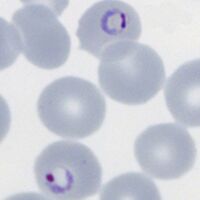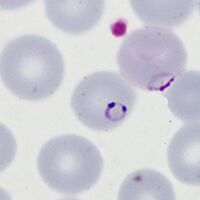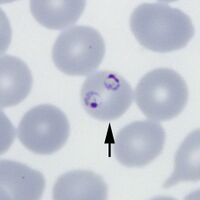Gallery of early trophozoites: Difference between revisions
From haematologyetc.co.uk
No edit summary |
No edit summary |
||
| Line 4: | Line 4: | ||
---- | ---- | ||
<span style="font-size:95%">''' ''P.falciparum'' '''</span> | |||
<span style="font-size:95%"> - | <span style="font-size:95%">''' ''P.falciparum'' '''</span></br> | ||
<span style="font-size:95%"> - Small delicate rings, within red cells of normal (or slightly crenated) appearance. Some parasite forms are typical though not exclusive of the species, these include: accolé forms, double chromatin dot forms, and multiple parasites within infected red cells. | |||
<gallery mode="traditional" widths=200px heights=200px> | <gallery mode="traditional" widths=200px heights=200px> | ||
Revision as of 21:48, 22 May 2024
Navigation
Go Back
P.falciparum
- Small delicate rings, within red cells of normal (or slightly crenated) appearance. Some parasite forms are typical though not exclusive of the species, these include: accolé forms, double chromatin dot forms, and multiple parasites within infected red cells.
"



